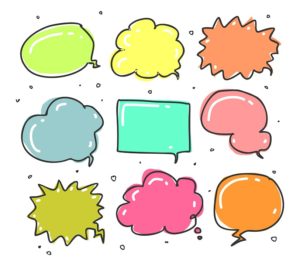Education, MY Classroom
Promoting Speech, Language and Communication at Home
I have previously shared an EPIC list of homeschooling resources, together with suggestions for Indoor Activities and Games and Outdoor Activities and Games so that children can have a balance of screen and non screen-based activities during this work from home period. The outdoor and indoor lists contain lots of activities to support gross and fine motor skill development.
Today, as promised, I would like to share a few resources to support Speech, Language and Communication development. I have chosen some of my favourites and some I have not tried but that look promising. The activities in each of the recommendations are quite general and will be beneficial to all young learners. Children with specific diagnosed needs should continue working on the target skills identified by their Speech and Language Therapist.
You will find many language games in our Indoor Activities and Games post and, as you know, our CardEd resources are a brilliant tool for promoting vocabulary and communication in a myriad of ways. The blog post linked here provides more information on CardEd and links each of the resources we have now made available for free to support continuous learning at this time. To make things easier, I have also created a 5-day activity set for this week and will add more for each week of school closures.
A Few Thoughts on Speech, Language and Communication
One of the things we focus on at school is ensuring children have a ‘language-rich’ environment. This involves surrounding children with new and interesting vocabulary through the word choices we are making (e.g., adding adjectives, using idioms and figurative language etc.), through oral storytelling and by creating a print-rich environment with words on display. Of course, none of this has any value if the children are not paying any attention to us, so we must gain their focus and ensure they are listening at the outset.
Another technique teachers use is increasing the complexity of the instructions we deliver, moving from a single direction (“Put your coat on”) to more complex ones (“Go to the cloakroom, get your coat and put it on”). Checking in with children to ensure they have understood is critical; we can be a forgetful lot and frequently need to ask, “Remind me what I just asked you to do.” Try with your child and see how many instructions they can process at once. If they are presently at 2, can you begin to work towards 3 over the course of these current school closures? As well as checking in with your child to ensure they have understood, slowing down the pace at which you speak to allow for more processing time can help.
To build confident communicators, we provide feedback and teach vocabulary in subtle ways. Suppose we ask a child,
Teacher: What have you drawn?
Child: I drawed a car.
Teacher: Wow! I like the car you drew! Tell me more about it.
Child: It is a blue car.
Teacher: That is an impressive blue car. How fast can it go?
Here we have corrected the past tense generalisation (drawed) this child has made, introduced new vocabulary (impressive), used expression (Wow!) to demonstrate our interest and enthusiasm for what the child has done, and used prompts and questions to keep the conversation going. Allowing children time to think and formulate answers is also crucial.
With our youngest learners, getting down to their level and engaging with what they are doing is key. We follow their lead in the games and role-plays they are enjoying. Periodically adding a comment on what is happening during the play is a way to model language and teach vocabulary. Pauses allow for children to interject and add their own thoughts of comments should they feel like doing so. It is important not to bombard children with questions as they play. We learn lots about what they are thinking simply by watching them in action.

Doubtless you do most or all of these things on a daily basis in communicating with your child(ren) without a specific teaching goal in mind or consciously focusing as to why. I just find the reasoning behind it all fascinating and developing communication is a topic I have written quite a bit about. If you would like to read more on the topic, my posts for International Teacher Magazine are linked at the bottom of this post.
Socially Distant Bear Hunts
Before diving into the resource list below, I want to draw your attention to a fabulous movement cropping up in communities around the world – Socially Distant Bear Hunts – an activity that supports neighbourhood spirit and learning at the same time.
With play-dates banned, why not liaise with neighbours and friends to put a bear in your window and have children go on a bear hunt? So many language possibilities from such a simple activity and a great opportunity to develop maths at the same time. If, as we are here, you are under a full lockdown, this still makes a brilliant at-home learning task. Hide bears (and any other soft toys you can find) around the house for your child to find. As they do so, have them describe where the bear is thus developing their use of prepositions. Extend the task by having them hide the bears for you (or their siblings) to find.
Thank you to my wonderful cousin, Helen, for drawing my attention to this initiative.

Now, with all that said, let’s dive into the resource list. I have included a brief description of what each website has to offer and recommended my particular favourites.
Resource List
Free Language Stuff: BUMPER number of free activity worksheets, sorted into 20 categories, e.g., adjectives, conjunctions, helping verbs, pronouns, and questions.
Home Speech Home: a really informative site with lots of speech therapy activities and games to target particular sounds, as well as guidance and activities for addressing specific disorders, together with games to play and suggestions for book-based speech and language activities.
Humber NHS: A wealth of language resources available as PDFs for free download. I highly recommend you check this link out.
Leeds Community Healthcare (NHS): A HUGE speech and language toolkit covering aspects such as attention and listening, play, early communication, understanding language, expressive language, speech, social skills and interaction, bilingualism and screening.
Mommy Speech Therapy: has stories and vocabulary sheets available to target particular sounds. Lots of advice available on Heidi’s blog also.
Playing with Words: has a series of informative blog posts on the use of toys to promote language development.
Picture Dictionary: Lots of categories of vocabulary (e.g., food, furniture, plants and weather) with translations into a number of other languages.
Quia: Lots of games to play here. This site does not have the most appealing of layouts but lots of great language and literacy activities, e.g., descriptions, categories, and associations. I would advise sitting with your child to support them with reading in some of these activities.
SpeechLink – Speech and Language: List of activities to support speech and language, together with suggestions for promoting language and communication in everyday scenarios around the home. This is another of my top recommendations. Check out this booklet of games.
Speech and Language Kids: Information, advice and free games and printables.
Speech Works Services: This website has links to lots of other sites with information and communication and has a list of suggested speech therapy apps. I have not tried these, so if you do and would leave a comment in review to help other parents, that would be really great. Thank you.
The Communication Trust: Lots of resources available here to support parents, e.g. this Listen Up resource.
Twinkl: Huge number of resources categorised to support attention and listening, auditory memory, and speech and listening.
Very Well Family: 5 common games with suggestions for tweaking them to focus on particular target areas.
Vocabulary: Activities to support learning vocabulary.
Warwichshire NHS: This is a huge file that requires time to sit down and go through in detail but is packed full of information, tips and games to develop each aspect of language. A good one for teachers researching speech, language and communication also.

As always, if you have any tips or resources to share, please comment and let others know. I see a wonderful sense of community and fellowship developing out of our current situation. Let’s build on this for the greater good.
Take care and stay safe all!
Posts for International Teacher Magazine on developing language and communication.

Pingback: An Analogy to Explain why we #StayHome. Beauty in a Bear by Nancy L. Ogilvie.
Pingback: Dumond Education’s EPIC List of Homeschooling Resources!
Pingback: Dumond Education’s EPIC List of Homeschooling Resources! – Dumond Education